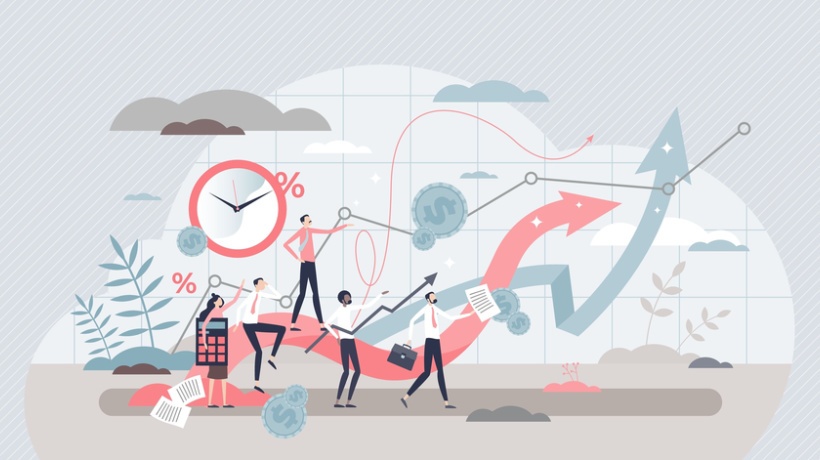Futureproofing The Retail Workforce
As a new retail year begins, let’s take stock of priorities in the industry’s "digital mindset." What should companies prioritize in eLearning and store employee enablement? What should they de-prioritize to achieve their objectives? How have digital expectations shifted, and how might they shift in the future? As we’ll discuss, retailers have spent too much time and too many resources optimizing elements of the store experience that are far less likely to boost their earnings and brand than frontline enablement.
eCommerce And Consumer Experience (CX): Have Retailers Gone Too Far?
Compare a large retailers’ omnichannel sales operations in 2023 with, say, 2018, and you’ll notice some differences right away. In 2023, the in-store experience is much more automated and digitalized, with expensive virtual merchandising displays lighting up the buyers’ journey and self-checkout kiosks freeing up staff time.
On the other hand, investments in eCommerce are skyrocketing, with the industry poised to grow from $3.3 trillion in 2022 to $5.4 trillion in 2026. Once Amazon began making a serious dent in consumer spending, retailers believed, justifiably, that they had to have matching eCommerce capabilities, dumping resources into this technology. Yet these investments are far less profitable than they might seem.
In-store sales account for fully 60% to 80% of purchases, leaving little room for eCommerce [1]. Other statistics show that eCommerce accounts for only 15% of sales [2]. Likewise, CX innovations like Virtual Reality (VR) and Augmented Reality (AR), while important, can’t do the work that retail leaders think they do [3]. According to the most recently available survey, 62% of respondents stop interacting with a brand because of poor customer service, a statistic only likely to grow as customers have less and less pocket money to spend [4].
Enhancing service levels is simply more important than creating an "immersive shopping experience." No amount of fancy VR and self-checkout lanes will make up for neglecting the retail frontline–in fact, they may make it only worse, as brands appear to overinvest in showy, customer-facing technology while underinvesting in enablement and eLearning.
Rerouting Resources: Transform The Frontline Experience
As you might know, digital transformation refers to the processes, systems, and technologies which digitalize and automate manual business operations. So far, the retail industry’s practice of digital transformation has not been satisfactory for the above reasons: eCommerce isn’t netting the value it needs to. Large retailers should consider turning their digital mindset back toward their most time-tested asset, that is, their frontline workforce.
For years, experts have been tolling the bell that the workforce is every large retailer’s most valuable resource [5]. Particularly in high-touch environments, high-performing associates mean the difference between profits and losses. A workforce that lacks the eLearning they need, that has not absorbed eLearning and translated it into action, that does not have the proper incentives to sell, has been set up to underperform. That’s especially true at this instant as the economy trends toward recession, and even major brands like Nike struggle to move inventory [6].
With digital apps out there to help, many retailers leave money on the table while continuing to spend it on mostly-losing bets. They leave their in-store associates, managers, and operators stranded without mobile technology to enable them, as we have concluded in our independent analysis [7]. Retailers should refocus on frontline enablement, force-multiplying what perhaps their most valuable assets, their workforce, are capable of.
Performance Enablement Platforms: Frontline Enablement Tech For The Modern Retailer
While some industry leaders and titans start to embrace real innovation, too many are still stuck in retail’s past, where the frontline was saddled with strung-together, poorly integrated tools that didn’t do much of anything to motivate sales productivity, drive inventory, or reduce attrition. Performance enablement, the paradigm for this kind of digital transformation, has recently been written up by experts at SHRM [8] and TLNT [9].
Performance enablement means that rather than just providing generic learning and productivity tasks to meet distributed workforce needs, each action and interaction with the platform targets specific, unique gains in personal performance. It’s not a one-size-fits-all approach, but one that dynamically responds to the individual’s needs, behaviors, and goals. The fact is that stores cannot really control customer behavior, which is affected by so many outside considerations, like inflation, gas prices, and perceptions of economic reality. But what they can control is their frontline performance, which the performance enablement model of technology delivery lets them do.
At a moment of retrenchment–with a recession looming, along with pushes for higher wages and staff cuts–retailers will have to do more with less, which happens to be one of the core utilities of performance enablement apps. (In addition to helping you do "more with more", no matter the workforce conditions, performance enablement gets the most from the resources you have.)
Brand Consistency And Emotional Connection: Intriguing KPIs For 2023
Let’s take the workforce-and-brand relationship as an example of enablement. In 2023 and beyond, retailers have to struggle with associates’ emotional connection with their brand, as well as brand consistency across stores and regions. Retail has always been a high-turnover industry, but today, retailers have to creatively, nimbly, find ways to move inventory and fight through market headwinds. Developing emotional connection and brand consistency among the frontline is a great way to accomplish that: passionate brand evangelists will find ways to persuade uncertain customers.
Performance enablement can optimize for this by using eLearning to promote active knowledge absorption, precisely by making this knowledge relevant to the individual associate receiving it, at the moment they receive it. Rather than a legacy eLearning platform that says, "here, learn this important piece of information for the company," performance enablement transforms eLearning to make brand knowledge matter to an employee’s goals, whether that means achieving a promotion or receiving a certain amount in commission: “Here, learn this important piece of information for yourself, for your goals."
Performance enablement platforms combine a smart business rules engine with live frontline data to trigger just the right activity at just the right time. On the associate’s app, "smart notifications" alert them to this activity, driving the right behaviors.
In my company’s independent research on the performance enablement model, we have found that learning and business activities delivered via smart notifications increased productivity by 38%. Likewise, our earlier research showed that those who received and opened at least one smart notification drove up their goal completion 29.4%.
Let’s say that since their sales have been dipping for a bit, our associate sees a smart notification about a new brand collaboration. This notification inspires and empowers them, driving brand loyalty while grabbing hold of a powerful sales pitch for customers: "Have you heard about our new collab?" The feeling that "this company is helping me sell" builds the emotional connection that retailers need to motivate their workforce.
Frontline Enablement Is Retail’s Future–Right Now
Naturally, brand consistency and emotional connection make up only one side of what performance enablement is capable of, and which in-store CX accents and out-of-store eCommerce tools are not capable of at all. Indeed, these types of investments have exhausted their utility for retail. Where CX tech seeks to "wow" consumers, and eCommerce seeks to optimize the buying process for a comparatively little-used channel for purchases, frontline performance enablement targets the most controllable element of the retail framework, if not also the most important: the workforce on the sales floor.
References:
[1] A decade in review: Ecommerce sales vs. total retail sales 2012-2021
[2] E-commerce as share of total U.S. retail sales from 1st quarter 2010 to 3rd quarter 2022
[3] Modern Retail Research: How brands and retailers are actually using AR and VR
[4] Have you ever stopped doing business with a brand because of a poor customer service experience?
[5] When Retailers Mistake Their Most Important Asset As A Cost
[6] Barclays downgrades Nike on inventory trouble, slowing demand and volatility in China
[7] Digital Transformation of the Sales Floor: Mobile Technology and the Future of Retail
[8] Performance Enablement: A Solution for the Great Resignation







